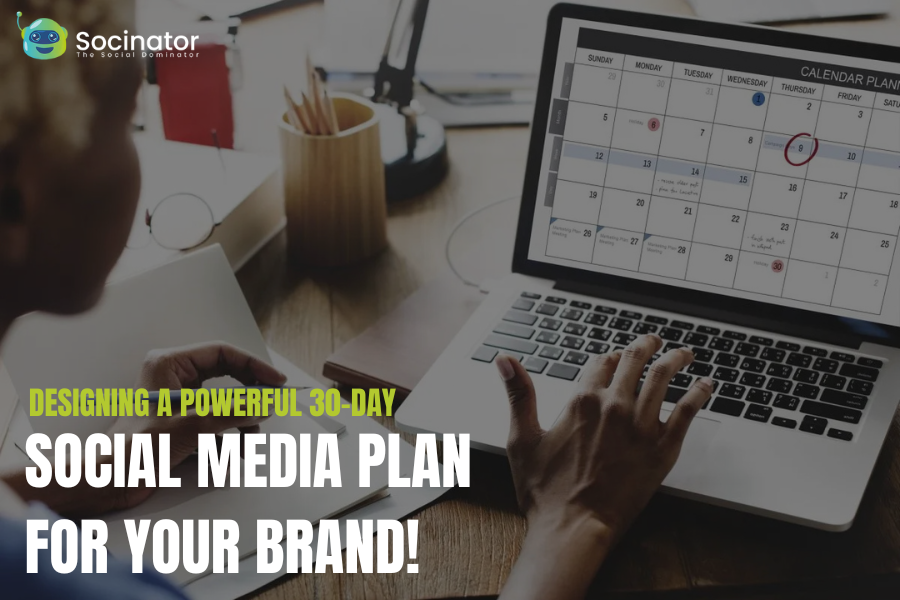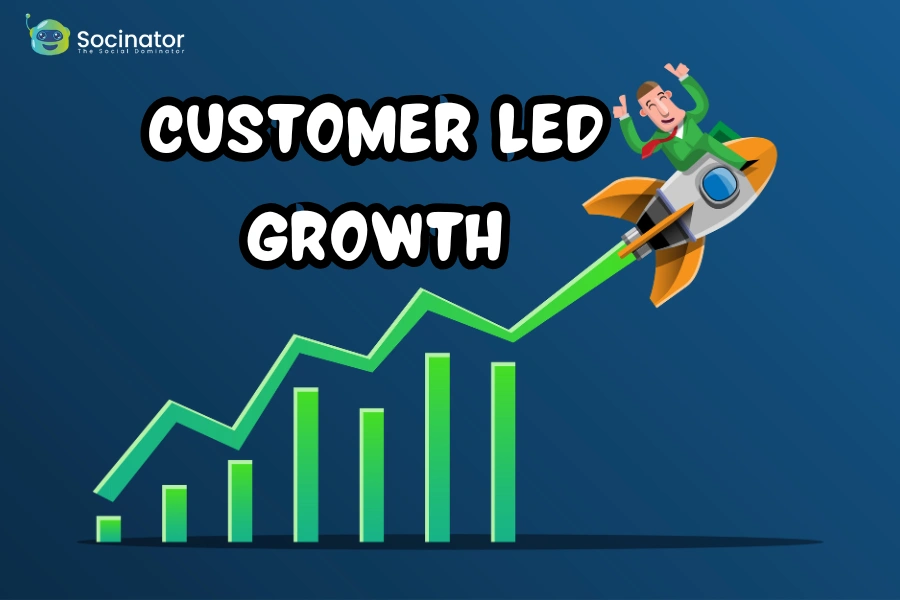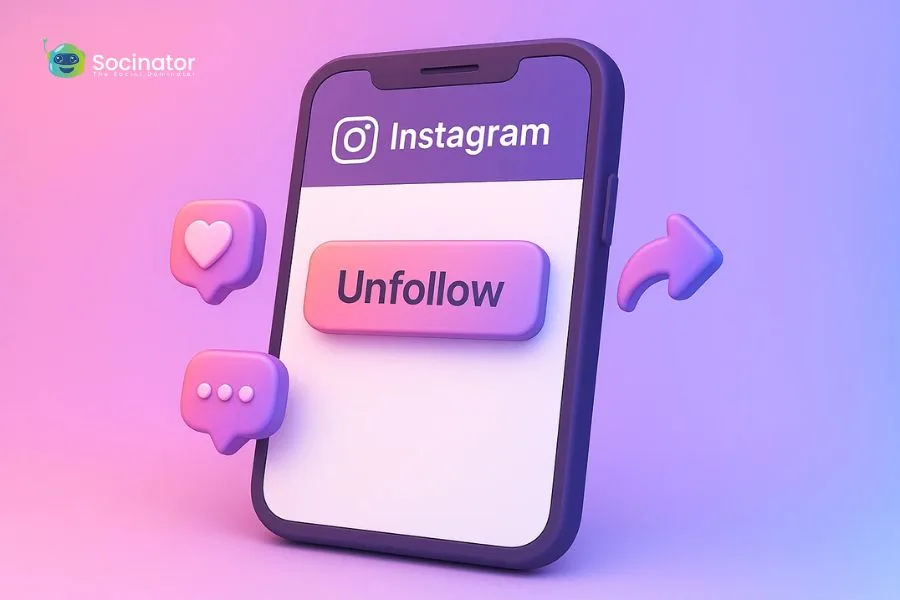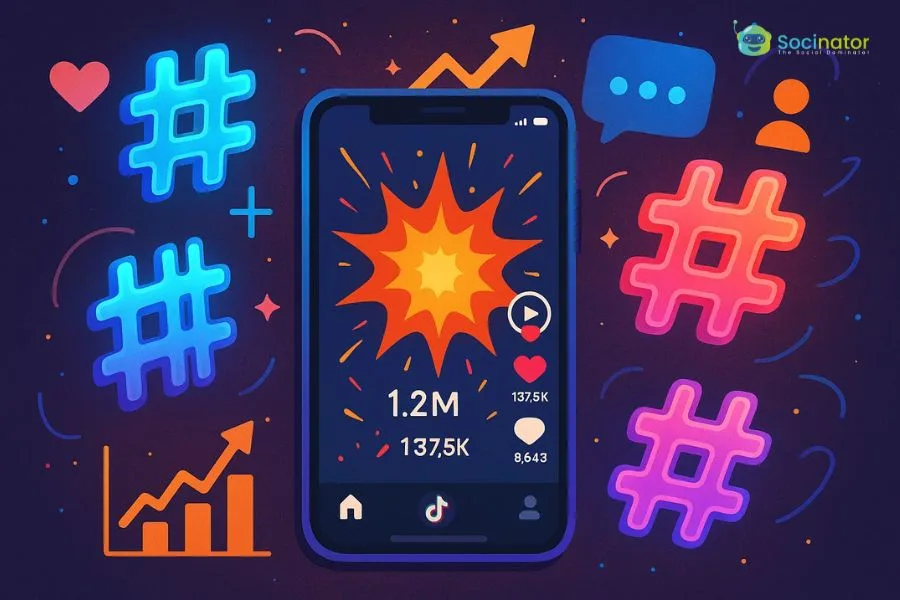Struggling to keep up with social media? Wondering why your content isn’t getting the attention it deserves? You’re not alone! The key to success isn’t just posting randomly—it’s having a social media plan.
This 30-day solid social media plan will help you stay consistent, attract the right audience, and boost engagement like never before. Whether you’re a brand, creator, or business, this strategy will guide you step by step—from planning killer content to analyzing what works best.
Let’s level up your social media presence and make it stand out!
In a hurry? Listen to the blog instead!
Week 1: Setting the Foundation for Your Social Media Plan
Day 1: Set Clear Social Media Goals
Before you start creating content, define the goals of your social media marketing plan. Having clear, measurable goals will guide your efforts. Whether it’s increasing engagement, driving traffic, or building brand awareness, your goals should be SMART (Specific, Measurable, Achievable, Relevant, Time-bound). This will give your social media plan the direction it needs to succeed.
- Example goals:
- Increase Instagram engagement by 20%.
- Generate 50 leads from LinkedIn by the end of the month.
- Boost Twitter mentions by 30%.
Important Tip: Goals should be realistic, yet challenging, and achievable with your available resources.
Day 2: Know Your Audience
Understanding your audience is key to creating relevant content. Analyze your followers, gather data on their demographics, interests, and behaviors. Leverage tools like Facebook Insights, Instagram Analytics, and Google Analytics to understand what drives your audience to engage with your content.
- Tips:
- Create audience personas to help visualize who you’re speaking to.
- Conduct polls or surveys to gather more direct feedback from your followers.
- Research trending hashtags that resonate with your target audience to increase visibility.
Tailoring your social media plan around what resonates with your audience will make your content more engaging and effective.
Day 3: Choose the Right Social Media Platforms
 Not all social platforms work the same for every business. You need to tailor your efforts to the platforms your audience frequents the most. Ensure you don’t waste valuable resources by posting on platforms where your target audience isn’t active.
Not all social platforms work the same for every business. You need to tailor your efforts to the platforms your audience frequents the most. Ensure you don’t waste valuable resources by posting on platforms where your target audience isn’t active.
- Platform Guide:
- TikTok: 1-4 times per day. Due to its viral nature, TikTok thrives on consistency.
- Instagram: 1-2 times per day. Prioritize Reels and Stories to boost engagement.
- Facebook: 4-5 times per day. A higher posting frequency is essential for visibility here.
- LinkedIn: No more than 1 time per day. Focus on professional insights and thought leadership.
- X (formerly Twitter): 3-4 times per day. Stay on top of trends and news.
- Pinterest: No more than 1 time per day. Utilize high-quality images and infographics.
Focus on the platforms that align with your target audience’s interests and where they are most active. Use social media automation tools like Socinator to streamline posting across multiple social media platforms for consistency as consistency is key in any social media plan.
Day 4: Develop Your Content Strategy
Create a strategy that blends different types of content (images, videos, infographics, etc.) to keep your audience engaged. Your content should provide value, evoke emotions, and align with your goals. A strong content strategy helps increase your brand’s visibility, foster community, and showcase your expertise.
- Content Types:
- Images: High-quality visuals and infographics, both shareable and informative.
- Videos: Use short-form videos for TikTok and Instagram Reels. These are more engaging and often lead to higher reach.
- User-Generated Content (UGC): Build trust by reposting content from your followers. People love when their content is acknowledged, and this strengthens brand loyalty.
- Tip: Create a mix of educational, entertaining, and promotional content to keep the feed diverse and exciting.
Day 5: Create a Content Calendar
 Plan your content for the month using a social media content plan. A content calendar is the backbone of your social media plan as it helps you stay consistent and organized, ensuring you’re posting the right content at the right time. By plotting out your posts ahead of time, you can avoid last-minute content creation stress.
Plan your content for the month using a social media content plan. A content calendar is the backbone of your social media plan as it helps you stay consistent and organized, ensuring you’re posting the right content at the right time. By plotting out your posts ahead of time, you can avoid last-minute content creation stress.
- Schedule:
- Plan the types of content you’ll post on each platform.
- Assign specific dates for posting content (avoid repeating the same content too often).
- Utilize tools like Google Calendar or Trello to organize your content schedule.
- Plan your frequency for each platform and adhere to it.
Day 6: Establish Your Content Pillars
Content pillars are the themes that guide your content creation. These pillars should be aligned with your business objectives and audience preferences. For example, if you run a fashion brand, your content pillars could include new arrivals, styling tips, and customer testimonials. These pillars ensure your social media plan remains focused and consistent
Day 7: Visual Consistency
Ensure that your visual style remains consistent across all posts. This includes colors, fonts, and logo placement. Consistency in visuals enhances brand recognition and builds trust with your audience.
- Tip: Use tools like Canva or Adobe Spark to maintain consistency in post design.
- Challenge: Keep your design simple but eye-catching—don’t overload visuals with text.
Week 2: Content Creation and Scheduling
Day 8: Organize Content Creation
Start creating your content based on your content calendar. Ensure you have a balance of post types, including images, carousels, short videos, GIFs, and more. Repurpose content where appropriate.
- Content Tips:
- Repurpose blog posts into shorter Instagram captions or Twitter threads.
- Break down long-form YouTube videos into bite-sized TikToks or Instagram Reels.
- Share customer testimonials as quote cards on Instagram to build trust.
Day 9: Optimize Content for Each Platform
Each platform has a unique format and best practices. A successful social media plan should tailor each piece of content to fit the platform’s specific audience and design.
- Instagram: Prioritize high-quality images, carousel posts, and Instagram Stories for better reach.
- TikTok: Use viral sounds, trends, and challenges to create engaging content.
- LinkedIn: Share professional insights, long-form thought leadership articles, and industry news to boost engagement with a professional audience.
Day 10: Leverage Social Media Tools
Incorporating a social media automation tool into your social media plan can save you time and improve consistency. Tools like Socinator allow you to automate your posts across multiple platforms, ensuring you maintain a consistent presence without the need to post manually each day. With features like optimal post scheduling and engagement tracking, Socinator can help streamline your social media efforts and enhance your overall strategy.
Automate, Engage, and Grow: Socinator Makes it Happen
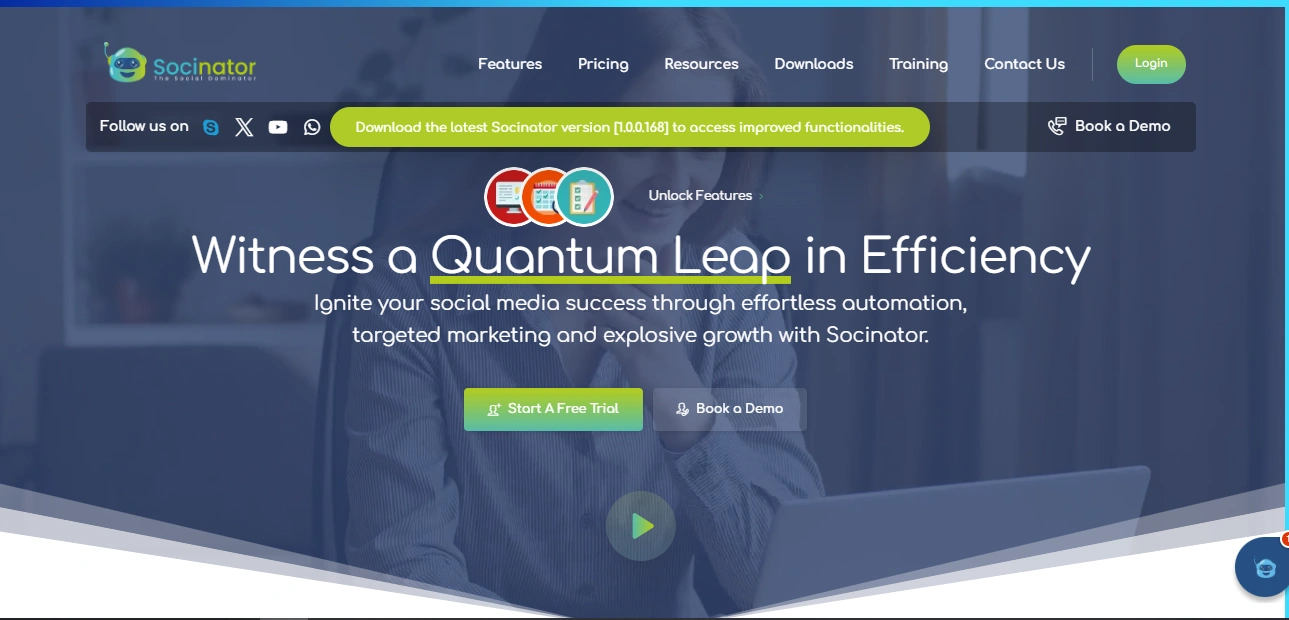 While automation tools can streamline your efforts, having the right one can make all the difference. Socinator is the perfect tool to simplify your social media strategy, ensuring that you stay consistent and efficient without compromising on quality. Let’s explore how Socinator can give you the edge you need to succeed.
While automation tools can streamline your efforts, having the right one can make all the difference. Socinator is the perfect tool to simplify your social media strategy, ensuring that you stay consistent and efficient without compromising on quality. Let’s explore how Socinator can give you the edge you need to succeed.
Key Features of Socinator:
- Effortless Scheduling & Posting: Save time by scheduling your content across multiple platforms in advance—no more last-minute posts.
- Smart Automation: Automatically follow, unfollow, like, and comment to keep your engagement flowing, even when you’re offline.
- Engagement Boosting: With Socinator’s automated engagement tools, you can automatically like, comment, and interact with your audience to keep them engaged while you focus on strategy.
- Analytics & Insights: Gain valuable insights into your social media performance, so you can adjust your strategy in real time.
With Socinator by your side, you can ensure that your social media presence is both effective and effortless, taking your engagement to new heights while freeing up your time for other important tasks.
Day 11: Build Engagement
 Social media is all about interaction. Engage directly with your followers through comments, DMs, polls, and quizzes. Don’t just post and forget; engage with your audience regularly as part of your social media plan. Interaction builds community and trust, making followers feel seen and valued.
Social media is all about interaction. Engage directly with your followers through comments, DMs, polls, and quizzes. Don’t just post and forget; engage with your audience regularly as part of your social media plan. Interaction builds community and trust, making followers feel seen and valued.
Tip: Set aside time each day to respond to comments and messages.
Day 12: Monitor and Analyze Performance
Track key metrics such as reach, impressions, clicks, shares, and conversions. Again, using social media marketing software like Socinator can help to gather insights on which content performs best.
Day 13: Adjust Content Based on Data
Review the insights gathered and adjust your strategy if needed. Double down on content formats or themes in your social media plan that worked well in the past weeks.
Tip: Create a list of top-performing content types and replicate it across different platforms.
Day 14: Plan for Upcoming Campaigns
Anticipate special events, promotions, or holidays that you can leverage in your next month’s plan. Schedule posts in advance to align with those milestones.
Example: If you’re planning a product launch, create teasers and countdowns in the weeks leading up to it.
Week 3: Experimenting with New Content and Campaigns
Day 15: Run Interactive Campaigns
Launch interactive content like giveaways, contests, or surveys to increase engagement. People love to participate in challenges and contests on social media.
- Tip: Create campaigns that align with your brand values to increase trust and participation.
Day 16: Collaborate with Influencers
 Find influencers who resonate with your target audience and have them promote your products or services. Influencer collaborations can boost your brand’s visibility and credibility.
Find influencers who resonate with your target audience and have them promote your products or services. Influencer collaborations can boost your brand’s visibility and credibility.
- Challenge: Identify influencers who match your audience demographic and your brand’s ethos.
Day 17: Use Paid Social Advertising
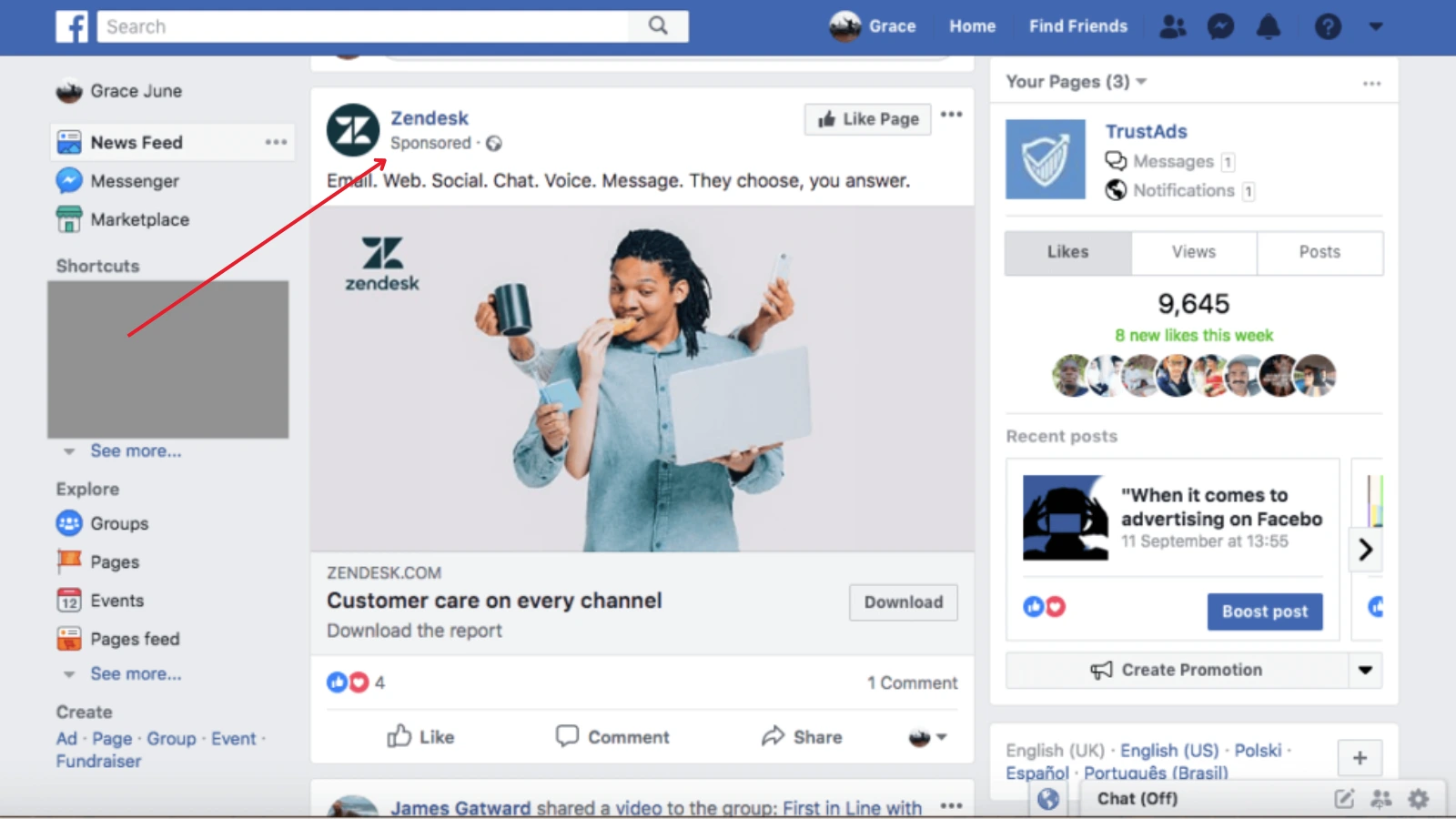 Leverage paid ads on platforms like Facebook, Instagram, or X to increase visibility and drive traffic to your website or landing page. Set a reasonable budget and refine targeting.
Leverage paid ads on platforms like Facebook, Instagram, or X to increase visibility and drive traffic to your website or landing page. Set a reasonable budget and refine targeting.
- Example: Boost high-performing organic posts for more reach and visibility.
Day 18: Foster User-Generated Content (UGC)
Encourage followers to create content with your product, and then repost that content on your page. This will boost your credibility and further cement your social media plan.
- Tip: Launch a hashtag campaign to encourage UGC and increase brand visibility.
Also Read: –
Social Media Content Strategy: Ultimate Tips And Examples
The Ultimate Social Media Post Planner: 6+ Features You Need
10 Ultimate Social Media Plan Template To Boost Your Strategy
Day 19: Share Behind-the-Scenes Content
Let your audience peek behind the curtain. Share how your products are made or give a behind-the-scenes tour of your office or production process.
- Tip: Make sure the content is authentic and transparent to build trust.
Day 20: Focus on Social Proof
Highlight positive customer reviews, testimonials, or media mentions to build credibility. Social proof is essential to fostering trust in your brand.
- Tip: Use carousel posts or video snippets to showcase customer feedback.
Day 21: Use Visual Stories
 Create Stories on Instagram, Facebook, or LinkedIn to keep your audience updated in real-time. These short-lived formats are great for building excitement and keeping followers engaged.
Create Stories on Instagram, Facebook, or LinkedIn to keep your audience updated in real-time. These short-lived formats are great for building excitement and keeping followers engaged.
- Tip: Use polls, questions, and quizzes in Stories to engage followers in a fun and interactive way.
Week 4: Refining and Finalizing Your Plan
Day 22: Repurpose High-Performing Content
Re-sharing your best-performing content ensures it gets maximum visibility. If a post performed well last week, share it again or adapt it into another format (e.g., memes into carousel posts).
- Tip: Use social media automation tools to recycle content periodically to ensure it reaches a wider audience.
Day 23: Run Analytics Review
Review your analytics for the final time this month. Look for patterns or spikes in performance, and use those insights for next month’s plan.
- Bonus: Look for trends that you can capitalize on moving forward.
Day 24: Plan for Next Month
Based on your analysis, create a rough plan for the upcoming month, ensuring that you’re prepared for upcoming holidays or product launches.
- Tip: Implement changes where needed, and fine-tune your content strategy for the next month.
Day 25: Celebrate Your Wins
 Take the time to acknowledge the successes you’ve had throughout the month. Celebrating your wins helps motivate your team and build momentum for future campaigns. Whether it’s hitting your engagement goal or receiving positive feedback from followers, take a moment to share these victories with your audience.
Take the time to acknowledge the successes you’ve had throughout the month. Celebrating your wins helps motivate your team and build momentum for future campaigns. Whether it’s hitting your engagement goal or receiving positive feedback from followers, take a moment to share these victories with your audience.
- Tip: Share milestones and achievements through a celebratory post or story. For example, “We hit 500 followers this month – thanks to all of you!
- Challenge: Don’t just focus on the numbers – also highlight qualitative successes, like increased community interaction or improved brand sentiment.
Day 26: Analyze What Didn’t Work
While it’s important to celebrate your successes, don’t forget to analyze what didn’t go as planned. Use your social media marketing software to review posts that didn’t generate the desired results and understand why they fell flat. Was it the timing, content format, or something else?
- Tip: Ask your audience directly what type of content they would like to see more of in the future. This can guide your content strategy for next month.
Day 27: Fine-Tune Your Content Strategy
Based on the results from your analysis, make adjustments to your content strategy. Fine-tune the types of posts that performed well and rethink the ones that didn’t.
- Example: If video content on TikTok led to more shares, allocate more resources to producing short-form videos next month.
Day 28: Revisit Your Social Media Goals
With only a few days left in the month, revisit the goals you set at the beginning. Were they achieved? If not, what can you do differently? Adjust your goals for the next month accordingly to ensure continuous improvement and growth.
- Tip: If some goals weren’t reached, break them down into smaller, achievable milestones for the upcoming month.
Day 29: Plan for Next Month’s Key Events
Take time to plan for any upcoming events, promotions, or seasonal content. If there are holidays or product launches coming up, begin preparing your content and schedule posts ahead of time.
Day 30: Refine and Reorganize Your Social Media Calendar
On the final day, review your social media content plan for the upcoming month and reorganize your content calendar as needed. Ensure that it reflects the learnings from the current month, and keep the strategies that worked while making improvements on the areas that didn’t.
- Tip: Using a social media planner can help you stay on top of these changes, allowing you to easily track and implement adjustments as needed.
All Said and Done
A well-structured social media plan can make all the difference in growing your brand. By following this 30-day strategy, you’ll stay consistent, engage with your audience, and continuously improve your content. Don’t forget—social media is all about trial and error. Keep refining your approach, and you’ll see the results in no time! Stay creative, have fun with it, and watch your social presence thrive!
FAQs: –
1.How do I know which social media platform is right for my brand?
Concentrate on the platforms where your target audience is most engaged. Consider factors such as platform demographics and content type. For instance, TikTok is ideal for short-form videos, while LinkedIn is great for professional insights.
2. What should I post on social media to keep my audience engaged?
A successful strategy includes a mix of educational, entertaining, and promotional content. Use a variety of formats such as images, videos, polls, and user-generated content to maintain diversity and excitement.
3. How frequently should you post on social media?
Posting frequency varies by platform. For example, TikTok thrives with multiple posts per day, while LinkedIn may only need one post daily. Ensure your posting schedule aligns with your audience’s activity patterns and platform best practices.


